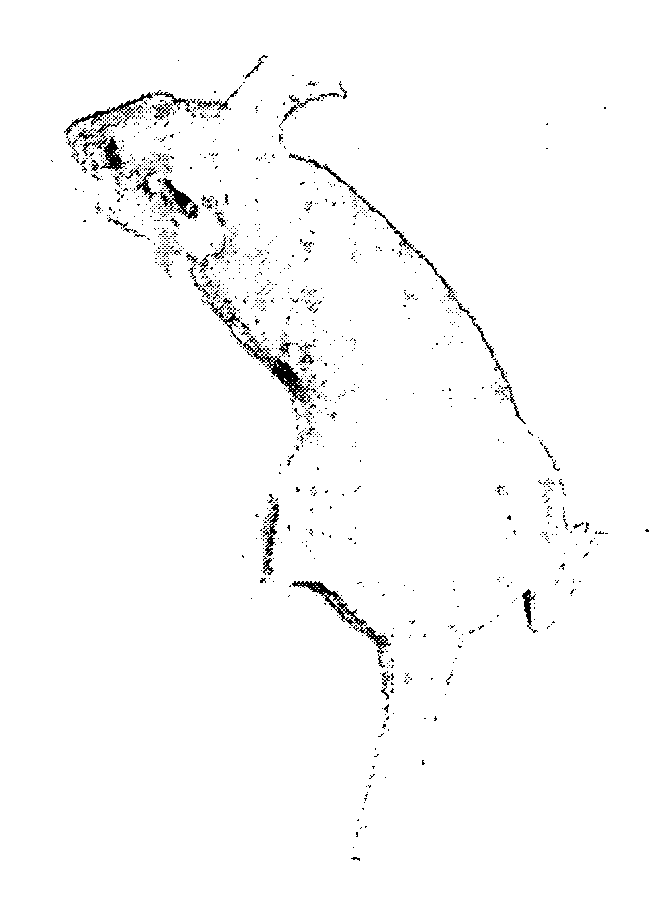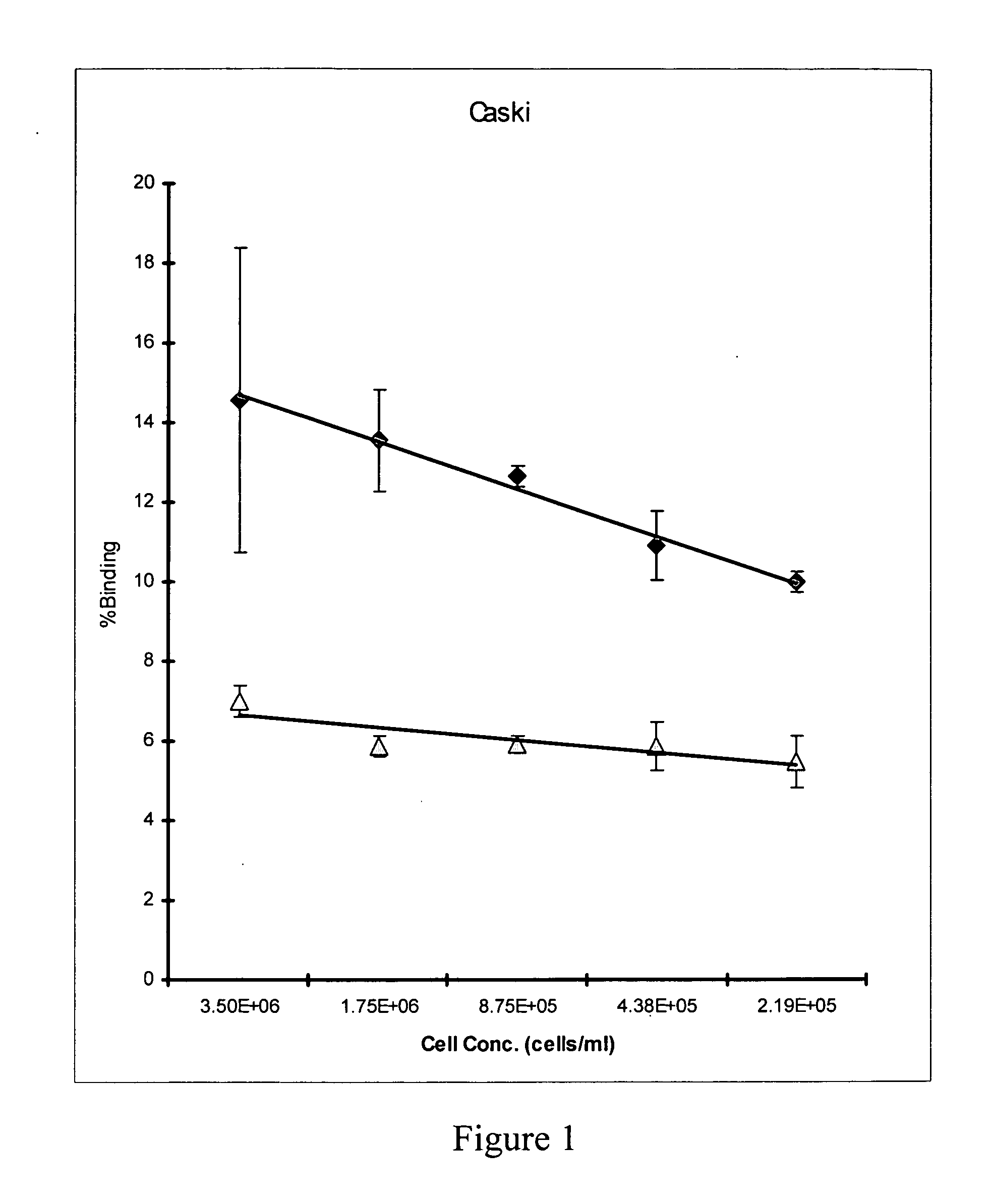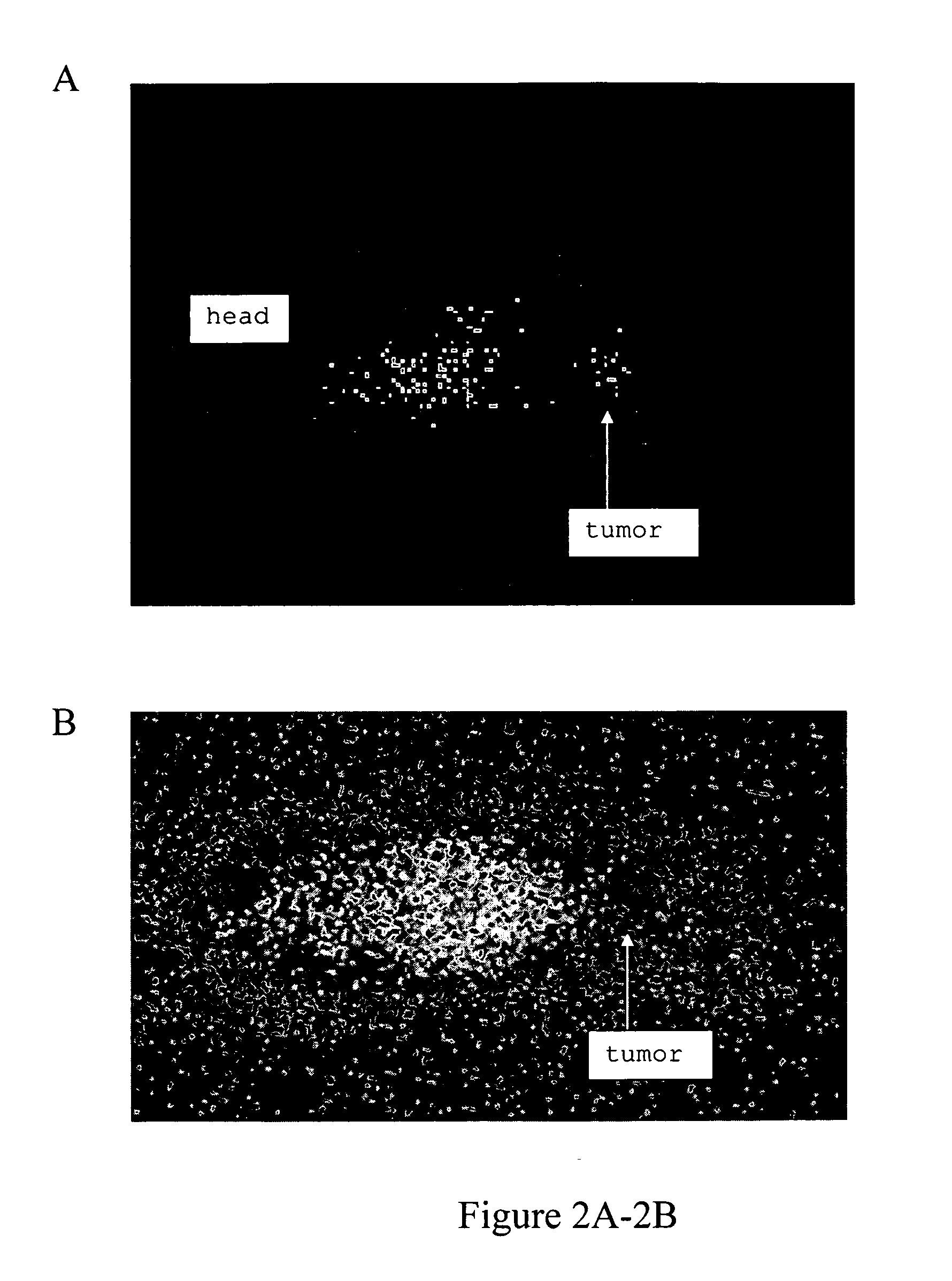Radioimmunotherapy and imaging of tumor cells that express viral antigens
a tumor cell and radioimmunology technology, applied in the direction of antineoplastic agents, drug compositions, therapy, etc., can solve the problem of significant uptake of antibodies in normal organs and achieve the effect of less toxicity
- Summary
- Abstract
- Description
- Claims
- Application Information
AI Technical Summary
Benefits of technology
Problems solved by technology
Method used
Image
Examples
##ic example 1
Prophetic Example 1
Generation of Anti-Virus Antigen IgG F(ab′)2 and Fab′ Fragments
[0110]Monoclonal IgG antibody 72A1 against Epstein Barr Virus gp 350 has been shown to prevent infection by EBV both in vitro and in mice and humans in vivo (Hague et al. (2006) J. Infect. Dis. 194:584-587). F(ab′)2 fragments can be obtained by use of a commercial kit (ImmunoPure, Pierce) as in Lendvai et al. (J Infect. Dis. 177: 1647-59, 1998). Briefly, pepsin digestion of IgG at pH 4.2 can be performed, after which the proteolysis is stopped by centrifugation of the pepsin beads and by adjusting pH to 7 with 5 M sodium acetate. Fab′ fragments can be generated by incubation of F(ab′)2 fragments with 10 mM dithiothreitol followed by 22 mM iodoacetamide to block the thiol groups. The molecular weight of the obtained fragments can be analyzed by sodium dodecyl sulfate-polyacrylamide gel electrophoresis (SDS-PAGE) and by size-exclusion HPLC. The protein concentration can be determined by the method of Low...
##ic example 2
Prophetic Example 2
Indirect Labeling of Antibodies and F(ab′)2 Fragments using Succinimidyl-HYNIC (Hydrazynonicotinamide)
[0111]For “indirect” radiolabeling with, e.g., 188-Re and 111-In, antibodies and F(ab′)2 fragments can be derivatized with, e.g., succinimidyl-HYNIC (hydrazynonicotinamide) and purified as by Blankenberg et al. (J. Nucl. Med. 40:184-191, 1999). The advantage of employing “indirect” labeling via bifunctional chelating agents such as HYNIC or others over “direct” labeling is that the radiolabeling process is greatly simplified and shortened by using the aliquots of HYNIC-binding molecule which can be stored frozen for prolonged periods of time. The incorporation of HYNIC into the proteins can be monitored spectrophotometrically at 385 nm (King et al. (1986) Biochem. 25:5774-5779). The initial HYNIC to protein ratio is preferably chosen so that the final HYNIC to protein ratio does not exceed about 1.5 because above this number a partial loss of immunoreactivity may ...
##ic example 3
Prophetic Example 3
Radiolabeling of Binding Molecules by an Attached HEHA
[0112]HEHA (1,4,7,10,13,16-hexaazacyclo-hexadecane-N,N′,N′,N′,N′,N′-hexaacetic acid) is a monovalent chelating agent capable of covalent attachment to proteinaceous binding molecules. HEHA is described as a superior carrier for radiation-emitting isotopes for radioimmunotherapy, and is particularly useful with the alpha-emitter 225-Ac (U.S. Pat. No. 6,995,247 to Brechbiel et al.). 225-Ac can be separated from 225-Ra (t1 / 2=15 days) by ion exchange and extraction column chromatography as described previously (Boll et al. (1997) Radiochim. Acta 79:145-149). Stock solutions of purified 225-Ac in 0.1 M HNO3 can be freshly prepared as needed. 225-Ac can be complexed with HEHA by mixing approximately 100 microliters of 225-Ac solution (approx. 10 MBq, 0.1 M HNO3) with 20 microliters of ligand (about 0.01 M in water) and adjusting the pH to near 5.0 by the addition of 5-10 microliters of 1.0 M ammonium acetate. The mix...
PUM
| Property | Measurement | Unit |
|---|---|---|
| path length | aaaaa | aaaaa |
| time | aaaaa | aaaaa |
| diameter | aaaaa | aaaaa |
Abstract
Description
Claims
Application Information
 Login to View More
Login to View More - R&D
- Intellectual Property
- Life Sciences
- Materials
- Tech Scout
- Unparalleled Data Quality
- Higher Quality Content
- 60% Fewer Hallucinations
Browse by: Latest US Patents, China's latest patents, Technical Efficacy Thesaurus, Application Domain, Technology Topic, Popular Technical Reports.
© 2025 PatSnap. All rights reserved.Legal|Privacy policy|Modern Slavery Act Transparency Statement|Sitemap|About US| Contact US: help@patsnap.com



